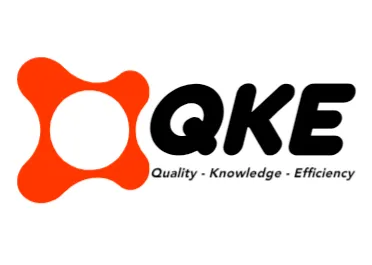Registering and applying energy labels for motorcycles requires manufacturers to comply with regional energy efficiency and emissions standards. The process involves preparing the motorcycle for testing, conducting tests at accredited facilities, and submitting data for approval. Once certified, manufacturers obtain and print compliant energy labels, apply them correctly to each motorcycle, and maintain compliance through meticulous record-keeping. Continuous updates and adherence to the latest standards are critical for ongoing compliance.
Key Takeaways
- Understand regional energy label requirements for motorcycles and compliance responsibilities.
- Prepare motorcycles for energy label testing, ensuring mechanical and fluid requirements meet standards.
- Submit motorcycles to accredited testing facilities for energy label certification per standardized cycles.
- Obtain, print, and apply energy labels according to design specifications post-certification.
- Maintain compliance through accurate record-keeping, documentation, and timely updates on performance changes.
Understanding Energy Label Requirements for Motorcycles

Understanding energy label requirements for motorcycles is essential for manufacturers, importers, and consumers.
These requirements vary significantly across regions, with some mandating energy labels for new motorcycles while others consider similar programs. For instance, Vietnam has mandated energy labeling since January 1, 2020, following a voluntary phase in 2019.
Energy label requirements for motorcycles vary by region, with some, like Vietnam, mandating labels for new models from January 1, 2020, after a voluntary phase in 2019.
Labels must detail fuel consumption, CO2 emissions, and specific model information. Regulatory bodies, such as Vietnam’s Ministry of Transport or California’s Air Resources Board, oversee these regulations.
Stakeholders must stay updated on the scope of these regulations, typically applying to newly manufactured, assembled, or imported motorcycles, and adapt to evolving standards to ensure compliance. Motorcycles are tested at certified facilities to verify fuel consumption and emissions data accuracy before labeling.
Preparing Your Motorcycle for Energy Label Testing

Before submitting a motorcycle for energy label testing, it is critical to ensure the vehicle meets all mechanical and fluid requirements outlined in the testing standards.
This includes a thorough pre-test inspection of the motorcycle’s frame, components, brakes, exhaust system, lights, and general fixings, as well as verifying fluid levels and specifications.
The energy label registration process requires these checks to be conducted meticulously to avoid testing delays or failures due to non-compliance with technical requirements.
Motorcycle Inspection Requirements
Motorcycles undergoing energy label testing must meet specific prerequisites to ensure valid and accurate results. These prerequisites cover aspects of motorcycle safety and emissions compliance. A detailed list of requirements is provided below:
| Requirement Category | Details |
|---|---|
| Documentation | Valid registration, proof of ownership, insurance, and technical documents. |
| Technical Condition | Roadworthy condition, functioning brakes, adequate tire tread, and operational lights. |
| Structural Integrity | No significant corrosion and certified modifications. |
| Engine and Fuel System | Full fuel tank, no leaks, fresh fluids, and intact exhaust system. |
| Emissions Readiness | Use of fuel additives and engine cleaners to optimize emissions results. |
Ensuring compliance with these prerequisites is crucial for a successful energy label testing process.
Energy Label Registration Procedure
Preparing a motorcycle for energy label testing requires adherence to a comprehensive process to ensure the vehicle meets necessary technical standards.
Mechanical components must be inspected and adjusted to manufacturer specifications, including tire pressure, chain lubrication, and air filter cleanliness.
Fuel and fluid management involves draining and refilling the fuel tank with specified test fuel and using engine oil with the correct viscosity.
Measurement and data collection systems, such as calibrated sensors and portable emissions measurement systems, must be installed and connected to a dynamometer.
The motorcycle must be securely fixed to a chassis dynamometer, programmed to simulate standardized driving cycles and accurately measure power and torque.
These preparation steps align with energy label standards and application guidelines to ensure accurate and reliable test results.
Navigating the Testing and Certification Process

The testing and certification process for motorcycle energy labels requires adherence to specific regulatory standards and procedures.
Manufacturers must submit their motorcycles to accredited testing facilities, following standardized cycles like the WMTC or EPA’s “City” driving cycle.
Certification timelines may vary depending on the region and the complexity of required testing. Testing fees are also a consideration, varying based on the type and number of tests needed for compliance.
Upon successful testing, data is submitted to the relevant regulatory authority for approval, after which manufacturers can proceed to the labeling phase.
Obtaining and Printing Your Energy Label

Once the testing and certification process for motorcycles is successfully completed, manufacturers must focus on the specifics of obtaining and printing the required energy labels.
This phase involves strict adherence to label design specifications, including detailed requirements for layout, color, and content, which must be followed precisely to ensure regulatory compliance.
The final step is correctly applying the labels to motorcycles, followed by rigorous verification procedures to confirm that all specifications have been accurately met, thereby fulfilling energy label regulatory obligations.
Testing and Compliance
Manufacturers, assemblers, and importers are responsible for adhering to stringent energy labeling requirements, a process involving testing, compliance, and obtaining energy labels.
This requires submitting product samples to designated energy performance testing laboratories, where vehicles are evaluated against standard test cycles, such as ECE Reg 40 for two-wheeled motorcycles.
Compliance standards mandate that testing aligns with international benchmarks set by organizations like UNECE, EC, or EEC, particularly for vehicles incorporating new technology.
Testing must be conducted by accredited laboratories, both domestic and international, ensuring that reported energy consumption is within 4% of the average measured results from test reports, thereby guaranteeing accuracy and regulatory compliance.
Label Design Specifications
To obtain and print energy labels for motorcycles, manufacturers and importers must adhere to specific design regulations set by regional authorities. Guidelines on specifications cover the shape, size, and color coding of the label, which must be followed precisely.
For instance, tire labels in Europe require a minimum size of 7.5 cm wide and 11 cm high. Essential information on the label typically includes the make and model, fuel type, fuel consumption, energy efficiency rating on an A-G scale, and emissions data, including CO2 emissions in grams per kilometer.
Alterations to the official label design are typically prohibited, ensuring consistency and clarity in the information provided to consumers.
Application and Verification
Manufacturers and importers have a critical responsibility to create and apply energy labels to motorcycles before market distribution.
They must ensure label accuracy based on official test results, with uniform designs for models sharing the same energy consumption report.
Printing these labels must follow the template provided by regulatory authorities, such as the Ministry of Industry and Trade.
Label verification is crucial, as regulatory bodies conduct compliance checks to ensure adherence to the prescribed format and data accuracy.
Non-compliance can result in penalties, underscoring the importance of meticulous label creation and application processes.
Correctly Applying Energy Labels to Your Motorcycle

When applying energy labels to motorcycles, careful attention to the positioning and visibility of these information tags is essential. Manufacturers are responsible for ensuring labels are placed in highly visible locations, easily observable by consumers. This positioning is critical for both pure electric and hybrid motorcycles, where labels must be placed in the most conspicuous location.
Regulatory standards may permit external labeling if internal placement obstructs visibility.
The responsibility for accurate labeling lies with manufacturers, assemblers, and importers, who must print labels according to the official template.
Retailers are then tasked with ensuring label visibility on the product’s outer surface. This process emphasizes the importance of label display and the manufacturer’s role in providing clear and accessible energy consumption information to consumers.
Ensuring Compliance and Record-Keeping for Future Reference

Maintaining compliance and accurate record-keeping is paramount for manufacturers, assemblers, and importers in the motorcycle industry to ensure adherence to energy label regulations.
Record-keeping involves retaining detailed documentation for each motorcycle model, including test reports, declarations of conformity, and energy label designs. Staying updated on new regulations is essential to align with evolving standards.
Records must be retained for a period specified by regulations and be readily accessible for regulatory review. Furthermore, any changes affecting a motorcycle’s energy performance must be documented and, if necessary, retested and relabeled, with records updated accordingly.

 Tiếng Việt
Tiếng Việt 日本語
日本語 中文 (中国)
中文 (中国) 한국어
한국어
